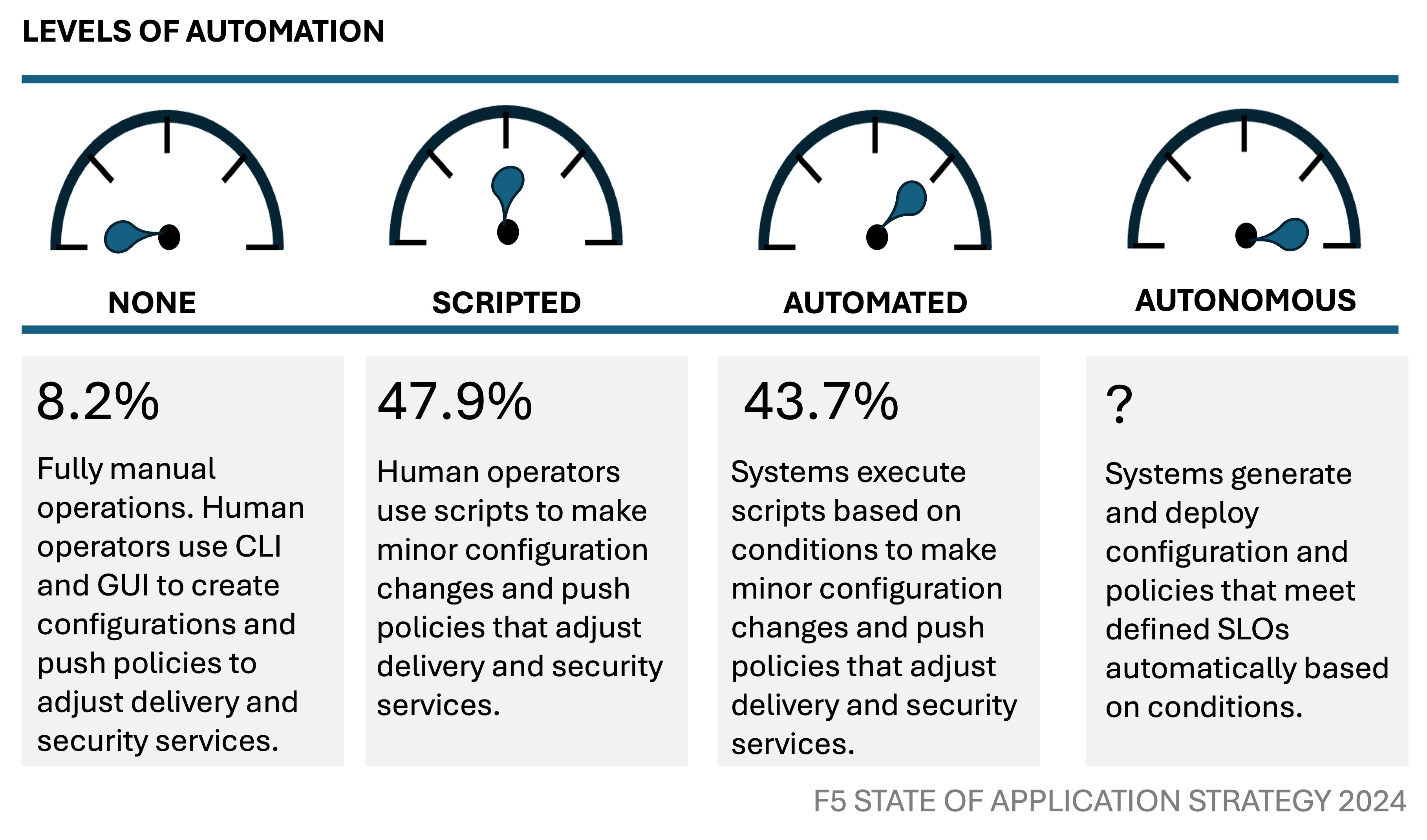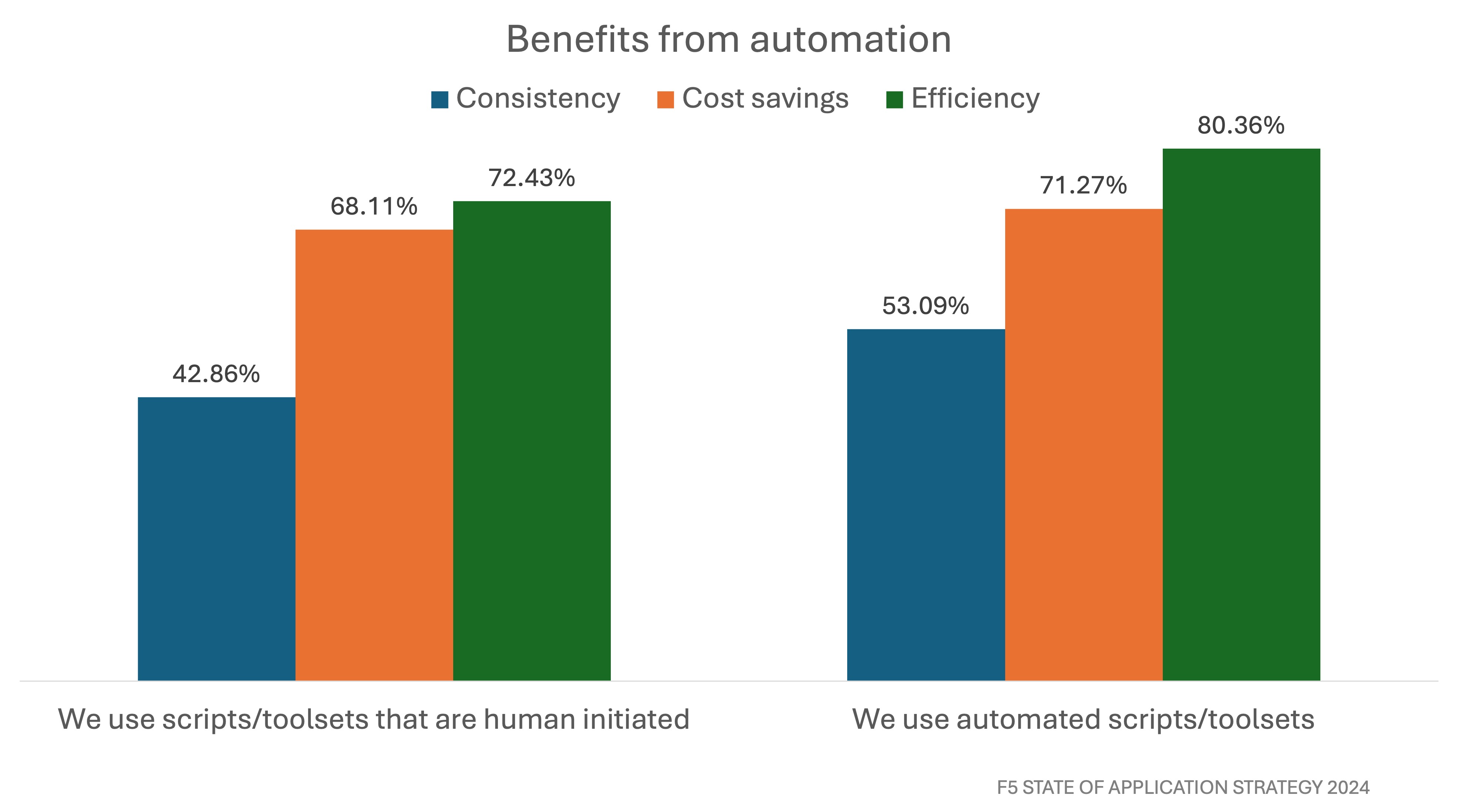Estratégia de Aplicação do Estado 2024: IA generativa redefine a evolução da automação
No passado, as organizações mais maduras digitalmente usavam a automação para executar scripts com base em objetivos comerciais e operacionais bem definidos para fazer alterações de configuração e aplicar ajustes às políticas. A introdução da IA generativa tornou isso quase ultrapassado, com o novo objetivo agora sendo um sistema mais autônomo.
Essa é a conclusão que tiro com base em algumas leituras recentes do State of Cloud Optimization 2024 da Intel , no qual “60% dos entrevistados consideram a natureza autônoma nas ferramentas de otimização como muito importante a extremamente importante”.
Se você está se perguntando o que são ferramentas de otimização, bem, elas estão relacionadas a custos e, mais especificamente, a atingir a principal prioridade para 2024 de “cortar custos de nuvem”.
FinOps, basicamente.
Mas autonomia não significa apenas cortar custos na nuvem. Também se trata de eliminar o trabalho operacional e aproveitar o poder da IA generativa para executar de forma autônoma a otimização e a segurança da entrega.
Quando perguntados sobre o maior valor que os entrevistados buscavam na IA generativa, a principal resposta para segurança de aplicativos e usos de entrega foi ajustes autônomos.
- Segurança : ajuste automaticamente as políticas de segurança e gere configurações de segurança sobre as ameaças detectadas
- Entrega : ajuste automaticamente as políticas de aplicativo e API com base nos objetivos de nível de serviço (SLOs) para otimização da entrega
Em outras palavras, as empresas estão buscando IA generativa para aumentar a aposta em estratégias de automação, desde scripts automatizados até ajustes autônomos e geração de políticas para gerenciar objetivos de segurança, desempenho e controle de custos.
O Estado da Automação
Operações mais autônomas podem parecer um pouco futuristas e inatingíveis, mas os níveis atuais de automação nas empresas são realmente impressionantes. Isso é duplamente verdadeiro quando você considera onde as organizações estavam em sua jornada de automação no ano passado.
Perto do final de 2022, a maioria (52,5%) das organizações ainda operava com estratégias de automação híbrida. Eles usavam scripts para fazer alterações de configuração e aplicar políticas, mas executavam esses scripts manualmente. Apenas cerca de um quarto (25,4%) estava usando sistemas para iniciar scripts, e impressionantes 21,9% não estavam usando nenhuma automação.
Avançando para o final de 2023, a maioria das organizações fez um progresso incrível em sua jornada de automação.

Este ano , menos de um em cada dez (8,2%) ignorou a automação e a porcentagem de organizações que estão atingindo o que era a maior maturidade (automatizada) quase dobrou.
Mas você notará que meu prático gráfico tem um novo objetivo: autônomo.
E isso porque a IA generativa apareceu e mostrou que o objetivo de operações totalmente autônomas não era apenas possível, mas alcançável. Isso ocorre porque a IA generativa pode ter alucinações quando são feitas perguntas abertas, mas quando focada na geração de conteúdo estruturado, como configurações e códigos com esquemas bem formados e especificações de sintaxe, ela tem um bom desempenho. E quanto mais isso acontece, melhor fica. Ele aprende, de certa forma, e pode se tornar proficiente na geração de políticas e configurações corretas para ajustar a infraestrutura e os serviços de aplicativos para atender aos objetivos definidos de nível de serviço.
E, com base em nossa pesquisa, as organizações querem alcançá-lo. Provavelmente porque os benefícios que as organizações estão obtendo com seus esforços de automação são maiores quando a automação é mais aproveitada.

Mas toda essa automação deve ser motivada por alguma coisa. Algo concreto. Algo mensurável. Algo acionável.
Esse algo são dados. Telemetria , para ser mais específico, gerada pelos sistemas e serviços que dão suporte aos aplicativos e APIs que as organizações desejam garantir que sejam rápidos, disponíveis e seguros.
É por isso que quando falamos sobre os seis principais recursos técnicos que as organizações precisam para acelerar a transformação digital, a automação e a observabilidade andam juntas em um único domínio. Porque o primeiro sem o último é apenas um palpite, e o último sem o primeiro não consegue aproveitar a visibilidade que as organizações desejam há décadas.
E todos esses dados, toda essa telemetria, também podem alimentar os mecanismos de IA preditiva que irão analisá-los e produzir insights acionáveis para que a IA generativa possa usá-los para ajustar configurações e políticas de forma autônoma.
Oh sim. Está tudo se encaixando agora. AIOps é a próxima evolução da automação , e tudo isso graças à IA generativa.
